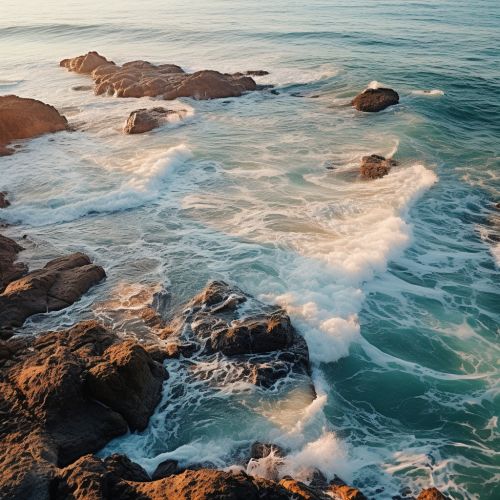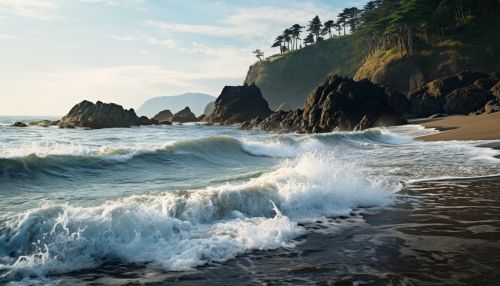Coastal Geomorphology
Introduction
Coastal geomorphology is the scientific study and analysis of the physical features and dynamic processes shaping the world's coastlines. This interdisciplinary field incorporates principles from geology, geography, and oceanography to understand the complex interactions between the land, sea, and atmosphere. The primary focus of coastal geomorphology is to investigate the formation and evolution of coastal landscapes, including beaches, cliffs, estuaries, dunes, and deltas.
Coastal Processes
Coastal geomorphology is largely driven by a range of physical processes that operate at the interface of land and sea. These include wave action, tidal movements, sea level changes, sediment transport, and weathering processes.
Wave Action
Wave action is a dominant force in coastal geomorphology. Waves are generated by wind blowing across the surface of the sea, transferring energy from the atmosphere to the ocean. When these waves reach the coastline, they can erode, transport, and deposit sediment, shaping the coastal landscape.
Tidal Movements
Tidal movements, caused by the gravitational pull of the moon and sun, also play a significant role in coastal geomorphology. The rise and fall of the tide can influence sediment transport, coastal erosion, and the formation of tidal landforms such as mudflats and salt marshes.
Sea Level Changes
Changes in sea level, both long-term (eustatic) and short-term (isostatic), can significantly impact coastal geomorphology. Rising sea levels can lead to the submergence of coastal landforms, while falling sea levels can expose new areas of the coastline to wave action and erosion.
Sediment Transport
Sediment transport is a key process in coastal geomorphology. Sediment can be transported along the coastline by waves and currents (littoral drift), or it can be deposited by rivers at the coast (fluvial input). The distribution and movement of sediment can shape a variety of coastal landforms, from beaches and dunes to estuaries and deltas.
Weathering Processes
Weathering processes, both physical (mechanical) and chemical, also contribute to coastal geomorphology. These processes can break down rocks and other materials at the coast, providing sediment that can be transported and deposited by waves and currents.


Coastal Landforms
Coastal geomorphology encompasses the study of a wide variety of coastal landforms. These include erosional landforms such as cliffs and wave-cut platforms, depositional landforms such as beaches and dunes, and landforms created by sea level changes such as rias and fjords.
Erosional Landforms
Erosional landforms are created by the action of waves and currents eroding the coastline. These include features such as cliffs, wave-cut platforms, and sea caves. The formation of these landforms is often influenced by the geology of the coast, with harder rocks forming steep cliffs and softer rocks forming more gentle slopes.
Depositional Landforms
Depositional landforms are created by the accumulation of sediment along the coastline. These include features such as beaches, dunes, and spits. The formation of these landforms is often influenced by the movement of sediment along the coast (littoral drift) and the input of sediment from rivers.
Landforms Created by Sea Level Changes
Changes in sea level can lead to the formation of a variety of coastal landforms. These include features such as rias, fjords, and barrier islands. The formation of these landforms is often influenced by the rate and magnitude of sea level change, as well as the geology and topography of the coast.
Human Impact on Coastal Geomorphology
Human activities can have a significant impact on coastal geomorphology. This includes activities such as coastal development, beach nourishment, and the construction of seawalls and other coastal defenses. These activities can alter the natural processes shaping the coastline, leading to changes in coastal landforms and ecosystems.
Future of Coastal Geomorphology
The future of coastal geomorphology is likely to be influenced by a range of factors, including climate change, sea level rise, and human activities. Understanding these factors and their potential impacts is a key challenge for coastal geomorphologists.
